Mikey Brooks's Blog, page 25
October 10, 2012
Your Readers Should Care About Your Main Character
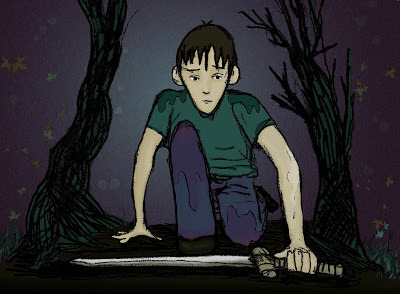
The most important thing in writing any type of fiction, whether it be a picture book, middle-grade, young adult, or adult genre, the main character has to express traits that allow the reader to personally connect with them. These are some tips on creating believable and likable characters that your readers will care for.Make them imperfect. Nobody likes a perfect person. They simply do not exist. It is hard to relate with a character if they have no human flaws or weaknesses. True, you do not want the flaws in them to be so over exaggerated that your reader begins to dislike your character. Think about the characters that you have fallen in love with as you’ve read. What flaws did they have? I really love Harry Potter, who doesn’t? His flaw was that he was constantly making mistakes, putting his friends in danger, and trying to play the hero. These things didn’t make me like him less, but I understood that they are what made him more realistic.
Don’t make them whiny. It is hard when characters are placed in difficult situations to not make them look too weak. We as writers want our characters to start at a place and grow from there, but if your main character is always crying when faced with a challenge it can be a turn off. Think about it. How do you feel about the person, coworker, friend, (we all have one of these in our lives) that is the complainer. Nothing ever seems to go their way. It’s difficult sometimes to show imperfections and not make them out to be whiney. Using Harry Potter as an example again, in book five, Harry shows us his “whiney” side and for me it was a turn off. Luckily, Harry pulled out of the “woe is me” stage and continued on being a strong character.
Make them real. I like to write out the most random things about my characters. Some things will never make it into the book, but because I know something about them it helps me make decisions when they are placed in a precarious situation. A good way for you to do this is interview your character. Find out their likes and dislikes. You’ll find that the more real a character is the more they will relate to the reader. Those are not the only ways to help your readers connect with the main character, but a few.
And that’s my key on how readers should care about your characters.
Published on October 10, 2012 17:56
September 26, 2012
Secrets to Successful Middle-Grade Novels
I write middle-grade, so of course I read a ton of middle-grade. I am always looking for tips from the books I read. I want to know what made this particular book good enough to win over the hearts of agents, publishers, and children. These are 5 secrets that make a successful middle-grade novel. I encourage you to read the books I share as examples and try to implement these tips in your own writing.
Hook your readers. The best middle-grade books I’ve read pull me in at the start. They don’t beat around the bush describing the beautiful flowers lining the mountain side; they cut right to the action. The best example of this is The False Prince, by Jennifer A. Nielsen. It starts with Sage, an orphan boy, about to be caught after stealing something. He thinks he’s just escaped when he finds himself in an even bigger problem that could cost him his life. It’s totally captivating right at the beginning. Characters must be genuine and likable. The characters are what drive the story. The reader must love your main character from the beginning on. Give them characteristics that set them apart from others. What makes them who they are? What are their interests, dislikes, passions, weaknesses, and strengths. I love the Gilda Joyce series, by Jennifer Allison. Gilda is quirky, funny, and real. Sure she thinks she has psychic powers and finds herself in ridiculous situations, but we as readers want to feel that she is psychic because we like her.
Characters must be genuine and likable. The characters are what drive the story. The reader must love your main character from the beginning on. Give them characteristics that set them apart from others. What makes them who they are? What are their interests, dislikes, passions, weaknesses, and strengths. I love the Gilda Joyce series, by Jennifer Allison. Gilda is quirky, funny, and real. Sure she thinks she has psychic powers and finds herself in ridiculous situations, but we as readers want to feel that she is psychic because we like her.
 Use humor. This I think is one of the greatest tools for middle-grade authors. Readers want to be entertained. Think about what makes kids laugh. Observe them. If you see some kids laughing about someone farting in public, you better believe they’ll laugh about it in a book. I love the book Charlie Joe Jackson's Guide to Extra Credit, by Tommy Greenwald. He knows how to add humor to the story. Kids laugh at the most bizarre things, and Greenwald shows that.
Use humor. This I think is one of the greatest tools for middle-grade authors. Readers want to be entertained. Think about what makes kids laugh. Observe them. If you see some kids laughing about someone farting in public, you better believe they’ll laugh about it in a book. I love the book Charlie Joe Jackson's Guide to Extra Credit, by Tommy Greenwald. He knows how to add humor to the story. Kids laugh at the most bizarre things, and Greenwald shows that.
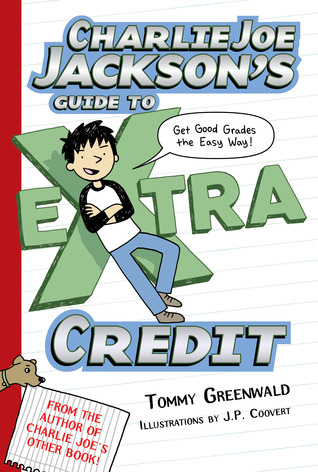 Give it conflict. Kids want to know that they can handle situations just like adults. They have the need to be in control. Let them see how the main character reacts when the stakes are raised and they are about to lose control. Make sure to set the stakes high. In the Harry Potter series, by J.K. Rowling,the risks and conflict only grew worse and worse as the story grew. The struggles that Harry goes through are what make us as readers love him and want him to succeed. [image error]
Give it conflict. Kids want to know that they can handle situations just like adults. They have the need to be in control. Let them see how the main character reacts when the stakes are raised and they are about to lose control. Make sure to set the stakes high. In the Harry Potter series, by J.K. Rowling,the risks and conflict only grew worse and worse as the story grew. The struggles that Harry goes through are what make us as readers love him and want him to succeed. [image error]
Keep it moving. The worst thing to do in a middle-grade book is to meander around the countryside. The reader needs to be constantly moving from event to event. It doesn’t always have to be action. There are beautiful books that have no action, but you need to keep the story moving. It needs to have a series of events that when connected create a wonderful plot. I think of the Fablehaven series, by Brandon Mull. Kendra and Seth start out on a road trip to their grandparents. The story doesn’t end there. They continue on a journey and have one event after another happen until they find themselves in the middle of a magical sanctuary for fantastical creatures.
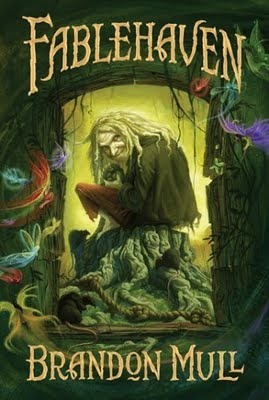
And that’s my keys on successful middle-grade novels.
Hook your readers. The best middle-grade books I’ve read pull me in at the start. They don’t beat around the bush describing the beautiful flowers lining the mountain side; they cut right to the action. The best example of this is The False Prince, by Jennifer A. Nielsen. It starts with Sage, an orphan boy, about to be caught after stealing something. He thinks he’s just escaped when he finds himself in an even bigger problem that could cost him his life. It’s totally captivating right at the beginning.
 Characters must be genuine and likable. The characters are what drive the story. The reader must love your main character from the beginning on. Give them characteristics that set them apart from others. What makes them who they are? What are their interests, dislikes, passions, weaknesses, and strengths. I love the Gilda Joyce series, by Jennifer Allison. Gilda is quirky, funny, and real. Sure she thinks she has psychic powers and finds herself in ridiculous situations, but we as readers want to feel that she is psychic because we like her.
Characters must be genuine and likable. The characters are what drive the story. The reader must love your main character from the beginning on. Give them characteristics that set them apart from others. What makes them who they are? What are their interests, dislikes, passions, weaknesses, and strengths. I love the Gilda Joyce series, by Jennifer Allison. Gilda is quirky, funny, and real. Sure she thinks she has psychic powers and finds herself in ridiculous situations, but we as readers want to feel that she is psychic because we like her.
 Use humor. This I think is one of the greatest tools for middle-grade authors. Readers want to be entertained. Think about what makes kids laugh. Observe them. If you see some kids laughing about someone farting in public, you better believe they’ll laugh about it in a book. I love the book Charlie Joe Jackson's Guide to Extra Credit, by Tommy Greenwald. He knows how to add humor to the story. Kids laugh at the most bizarre things, and Greenwald shows that.
Use humor. This I think is one of the greatest tools for middle-grade authors. Readers want to be entertained. Think about what makes kids laugh. Observe them. If you see some kids laughing about someone farting in public, you better believe they’ll laugh about it in a book. I love the book Charlie Joe Jackson's Guide to Extra Credit, by Tommy Greenwald. He knows how to add humor to the story. Kids laugh at the most bizarre things, and Greenwald shows that.
 Give it conflict. Kids want to know that they can handle situations just like adults. They have the need to be in control. Let them see how the main character reacts when the stakes are raised and they are about to lose control. Make sure to set the stakes high. In the Harry Potter series, by J.K. Rowling,the risks and conflict only grew worse and worse as the story grew. The struggles that Harry goes through are what make us as readers love him and want him to succeed. [image error]
Give it conflict. Kids want to know that they can handle situations just like adults. They have the need to be in control. Let them see how the main character reacts when the stakes are raised and they are about to lose control. Make sure to set the stakes high. In the Harry Potter series, by J.K. Rowling,the risks and conflict only grew worse and worse as the story grew. The struggles that Harry goes through are what make us as readers love him and want him to succeed. [image error]Keep it moving. The worst thing to do in a middle-grade book is to meander around the countryside. The reader needs to be constantly moving from event to event. It doesn’t always have to be action. There are beautiful books that have no action, but you need to keep the story moving. It needs to have a series of events that when connected create a wonderful plot. I think of the Fablehaven series, by Brandon Mull. Kendra and Seth start out on a road trip to their grandparents. The story doesn’t end there. They continue on a journey and have one event after another happen until they find themselves in the middle of a magical sanctuary for fantastical creatures.

And that’s my keys on successful middle-grade novels.
Published on September 26, 2012 20:34
September 25, 2012
75 Rejections in 7 Months
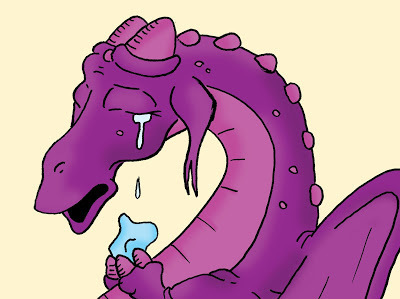
I started querying my middle-grade book, The Dream Keeper, back in late February –early March. A few weeks into it I received my first rejection and thought, “no problem there are plenty more agents to send to.” As the weeks past I began to get more. I then started querying agents a few weeks ago for my picture book, Bean’s Dragons. I’ve gotten two rejections so far. At first I wasn’t sure if I was up to doing this all over again. It is so hard to put so much time and effort into a book and then have someone tell you that it’s just not for them. I have come to realize some important things in dealing with rejections.
You cannot take rejections personal! Seriously! They are not rejecting you as a person; they are rejecting the opportunity to take on a project they’re not familiar with. I try to think of my book as a flavor of ice cream that no one has ever tried. Most people are hesitant to try a new flavor. They are familiar with what they know. It takes a lot for someone to try something different. Perhaps your book is one of those flavors unknown to others. Just because they don’t know what it tastes like and they don’t want to sample it, doesn’t mean you have failed as a writer.
Never give up! Believe me I have been there too. After I finished the last illustration for Bean’s Dragons I went back to my list of agents I’d queried. Most of them took on picture books too and so I wanted to review them. As I went down the page I began to count. Once I past 50, I began to feel like a loser. When I stopped counting at 73 I felt even worse. All but three agents I queried have rejected me. The remaining three I have yet to hear back from. I wanted to give up. I didn’t even want to try querying my new book, because I didn’t want to go through the roller coaster of dread anymore. But I knew that if I wanted my dreams of becoming a fulltime author/illustrator to happen, I had to make the effort.
I have a quote that is tapped to the bottom of my computer screen, “Never, ever, sacrifice what you want the most, for what you want the most at the moment.”-James Owen. I wanted at the moment to throw in the rag and call my work nothing more than a worthless hobby and focus on liking my regular job rather than hating it. But If I called it quits I’d be sacrificing my dream for the rewards of failure. So I reasserted myself and queried a few agents. I’ve received two rejections so far for my picture book, and I’m okay. I hurt inside, but I’m okay—my flavor wasn’t right for them.
I guess what I wanted to say in this post was that it’s tough. It’s downright hard as hell to succeed in your dreams, but it’s the climb that makes you strong. With every rejection I am better able to handle the self-doubt; I am better able to try harder. So please, never, ever give up. Keep trying and I know that one day we’ll all look back on our succeeded dreams and be more grateful for the journey we had obtaining them. Now I’m going to go and send more queries. And that’s my key on dealing with 75 rejections in 7 months.
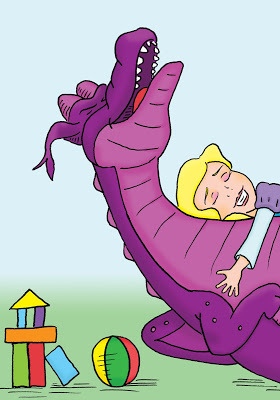
Published on September 25, 2012 04:41



